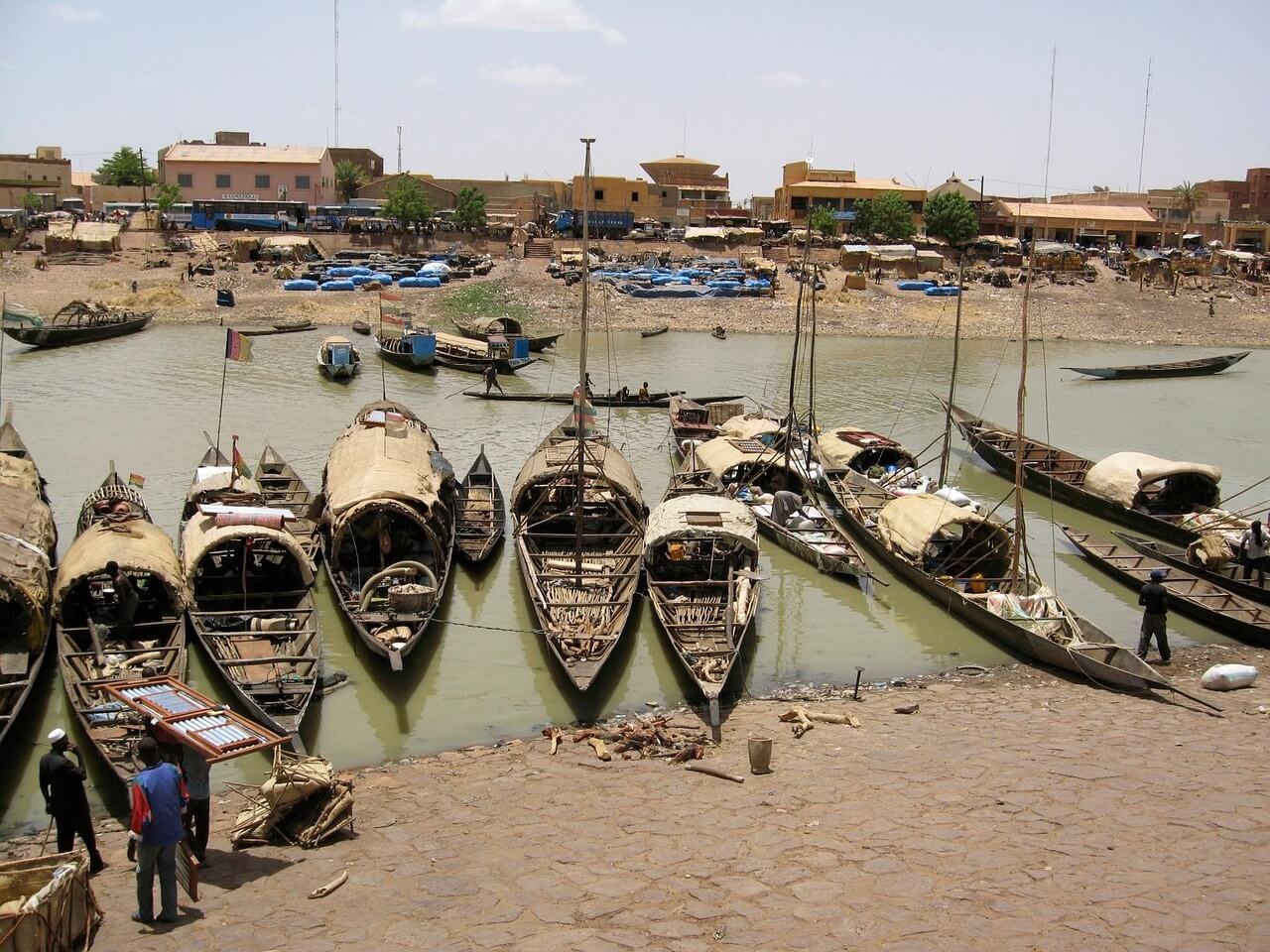When to visit Mali during the year?
Mali experiences a hot, dry climate with a rainy season from June to September. The best time to visit is during the cooler months from November to February when temperatures are milder. In summer, tourists flock to the banks of the Niger River for boat trips and fishing, while autumn is ideal for cultural festivals showcasing traditional music and dance. Popular sites like Timbuktu and Djenné draw visitors year-round, but expect peak tourist traffic during these cooler months. A survey indicated that over 60% of travelers prefer visiting during the dry season for outdoor events and exploring ancient towns.
How to get to Mali?
Mali can be accessed through various transportation modes, although air travel is the most convenient option. The main entry points are the capital, Bamako, and other cities like Mopti and Segou. Bus connections are available from neighboring countries, and while train travel isn’t available, car rentals offer flexibility for exploring rural areas.
- Main airports include Modibo Keïta International Airport in Bamako, with international routes from Paris (CDG), New York (JFK), and Abidjan (ABJ).
- Air France and ASKY Airlines provide regular flights. Expect around 14 hours from New York to Bamako with layovers.
- Main bus stations in Bamako connect to neighboring countries like Senegal, Burkina Faso, and Côte d'Ivoire.
- Routes typically serve cities such as Kayes, Sikasso, and Koutiala.
- There is limited international train service; the main train runs within Mali from Bamako to Kayes.
- The travel time is around 10 hours for this route.
- The primary highways include RN1 and RN6, connecting major cities.
- Bamako to Kayes is approximately 600 km, taking about 8 hours.
- Roads can vary in condition and may require a 4x4 vehicle in certain regions.
Tourist activities in Mali
Mali offers a rich tapestry of cultural experiences and natural wonders. In the capital, Bamako, visitors can explore the vibrant markets and visit the National Museum, showcasing Mali’s heritage. Head to Djenné for its iconic mud architecture, while an excursion to Timbuktu reveals fascinating Islamic history.
Adventure and Nature
The Niger River is perfect for canoeing and fishing, and the Dogon Country invites trekkers to revisit ancient villages perched atop cliffs.
Cultural Experiences
Participate in the Festival on the Niger in Segou for music and arts, or the colourful Festival of Masks showcasing traditional dances.
Historical Exploration
Don’t miss the ancient city of Gao and the Great Mosque of Djenné, both steeped in significant cultural tales.
Accommodation in Mali
Mali presents a variety of accommodation options suitable for different budgets and tastes. In urban areas like Bamako, you will find luxury hotels such as the Hotel Lafayette, offering modern amenities for around $100 per night. Mid-range options like guesthouses provide cozy stays from $40 to $70 nightly. For those seeking authentic experiences, local inns in Djenné or Mobti offer basic accommodations for about $20 to $30. Prices can vary greatly, especially during festivals and peak tourist times, so it is wise to book in advance during the high season.
Food in Mali
Malian cuisine is rich with influences from various cultures, featuring dishes that are hearty and flavorful. A popular staple is jollof rice, often served with grilled chicken or fish. Couscous and fufu are also prevalent. For those with a sweet tooth, try sweet potato pudding or rice with sugar. Meals typically cost between $3 to $10 at local eateries. Street food is a must-try, offering snacks like fried dough balls and grilled meat skewers. Visit lively markets in Bamako for the freshest local dishes and a taste of everyday life.
Important numbers and information
- Police: 17
- Ambulance: 18
- Fire Brigade: 19
- Embassy of the United States in Mali: (+223) 20 20 39 00
- Bamako-Senou International Airport: 1 Rue de l’Aéroport, Bamako
- Currency: West African CFA franc (XOF), cash preferred
- Visa required for most foreign travelers; check specific regulations prior to arrival.
What to see in Mali?
Mali is home to several UNESCO World Heritage sites that reflect its rich cultural history. The Great Mosque of Djenné is perhaps the most famous, with its stunning mud architecture. Next, visit Timbuktu, once a renowned center of learning, famous for its ancient mosques and manuscripts.
Don't miss the historic town of Gao, which offers insights into the empire of Mali, and the Bandiagara Escarpment, known for its dramatic landscapes and the unique Dogon villages. The annual Festival of Masks in the Dogon Country celebrates local traditions and attracts many visitors.
History, geography and climate
Mali, located in West Africa, is predominantly covered by the Sahara Desert in the north and savannah-like landscapes in the south. It is landlocked and home to the Niger River, an essential resource for agriculture and transport. Historically, Mali was part of several great empires, including the Mali Empire, which reached its peak in the 14th century. The climate varies significantly, with average temperatures ranging from 20°C (68°F) in winter to over 40°C (104°F) during summer months, influencing local life and agricultural practices.
Population and culture
Mali has a population of approximately 20 million people, predominantly made up of various ethnic groups including the Bambara, Malinke, and Tuareg. French is the official language, while local languages like Bambara are widely spoken. The country is predominantly Muslim, with vibrant cultural traditions reflected in music, dance, and festivals. Malians celebrate their culture through events like the Tabaski and Ramadan, bringing communities together with feasting and prayer. Hospitality is cherished, making visitors feel welcomed and embraced in the traditional lifestyle.


